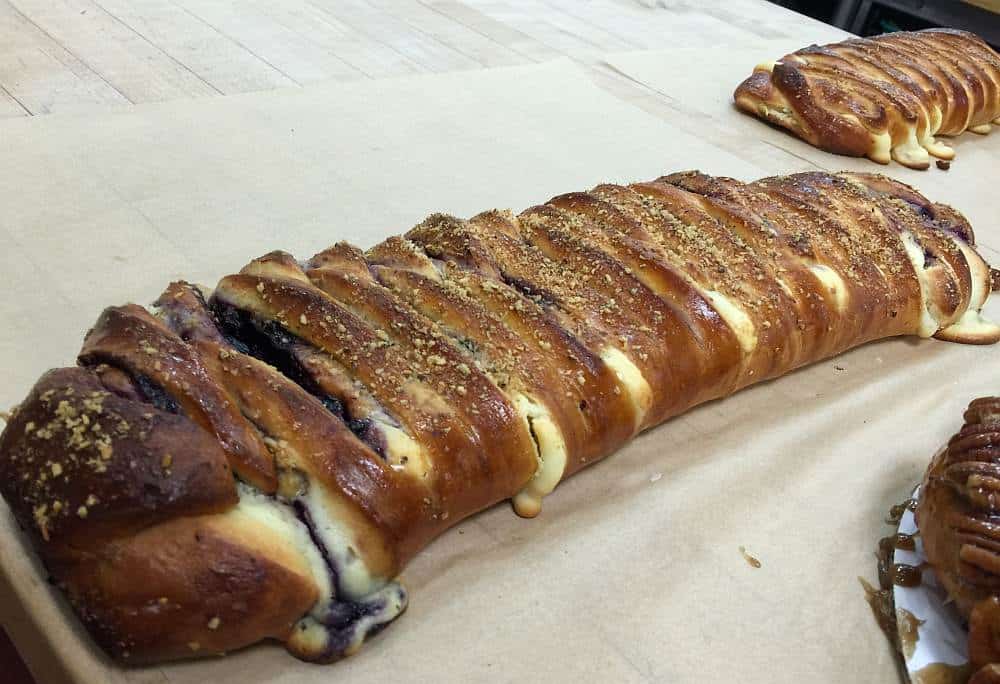
With my mind focused on my first skills test last week, I failed to discuss my new classes, Nutrition and Introduction to Gastronomy. Both classes are exactly as their names imply. In Nutrition, we learn about the current nutritional guidelines and how the nutrients in our food affect our bodies. In Introduction to Gastronomy, we learn about how our tastes and food habits are shaped by society and our surroundings, as well as world cuisines and customs. I’m finding that I am enjoying the academic classes just as much as the hands-on cooking classes. They are truly fascinating and offer a deeper look at food than what one can get in a kitchen.
In my production classes this week, our schedule was shaken up a bit. Our syllabus originally had us on track to make the practical cake, but our chef decided that with a break on the horizon, it would be better to hold off on it till after we get back. The practical cake is a layer cake consisting of genoise sponge and vanilla buttercream, topped with chocolate décor. We will be tested on it during our second skills examination, so it certainly seems like a good idea to wait till everyone is back in a school focused frame of mind. Our lesson on yeasted and fried dough was moved up to this weeks slot instead. We made cake and yeasted donuts, as well as braided coffee cake and sticky buns. We started the week’s work on Tuesday, with the production of the cake donuts and sweet dough that was to be used on Thursday for the cake and buns.

The difference between the cake and yeast donuts boils down to their leavening method. Though both rely on the blending method when making the dough/batter, the cake doughnuts use a chemical leavener in the form of baking powder. The baking powder releases C02 upon contact with moisture, creating bubbles in the batter. When exposed to the heat of the oil, a secondary reaction occurs, adding an additional increase in volume. The yeasted donuts, on the other hand, rely on the yeast for their leavening. After making the dough, it is put in a proofer to facilitate the fermentation of the yeast. Fermentation is the process in which the yeast consumes and breaks down the sugars present in the dough. As the yeast consumes this sugar, it produces C02, increasing the volume of the dough. The proofer is a temperature controlled box that provides an environment with the optimal temperature and humidity for yeast fermentation. It leads to a very puffy and airy product. The yeast donuts made on Thursday were lighter in weight and texture than the cake donuts. Though they’ve never been my favorite dessert, both types of donuts were delicious.

My favorite thing we made this week was actually the braided coffee cake, made from the sweet dough we produced on the cake donut day. Everyone was required to fill it with cheese filling, but we were given the option of adding either apple or blueberry as well. I chose the blueberry, which was the perfect contrast to the semi-salty cream cheese filling. The finished product was yeasty in flavor, tasting almost like a stuffed challah.
The lessons on frying and yeast doughs were very interesting. I had worked with yeast only a few times before, and these classes definitely helped further my knowledge on the subject. In 3 weeks time, I’ll be back in the thick of it. In the meantime, I will spend my vacation practising my recipes at home, trying out some new restaurants, and looking for some culinary adventures.
By Andrew Bergman
[starbox id=26]
